University of Redlands Emergency Alert System
Alert Received: . For more information, visit: https://www.redlands.edu/alert/
University of Redlands
Common Name: Toyon (most common); Christmasberry
Scientific Name: Heteromeles arbutifolia
Family: Rosaceae
Identification
Habit: The toyon is an evergreen shrub with a moderate growth rate. This shrub typically ranges from 6-30ft (1.8-9.1 m) in height and 10-15ft (3-4.6 m) in width10. The toyon is round in shape with dense foliage (Figure 1). The toyon has a sturdy and heavily-branched root system7.
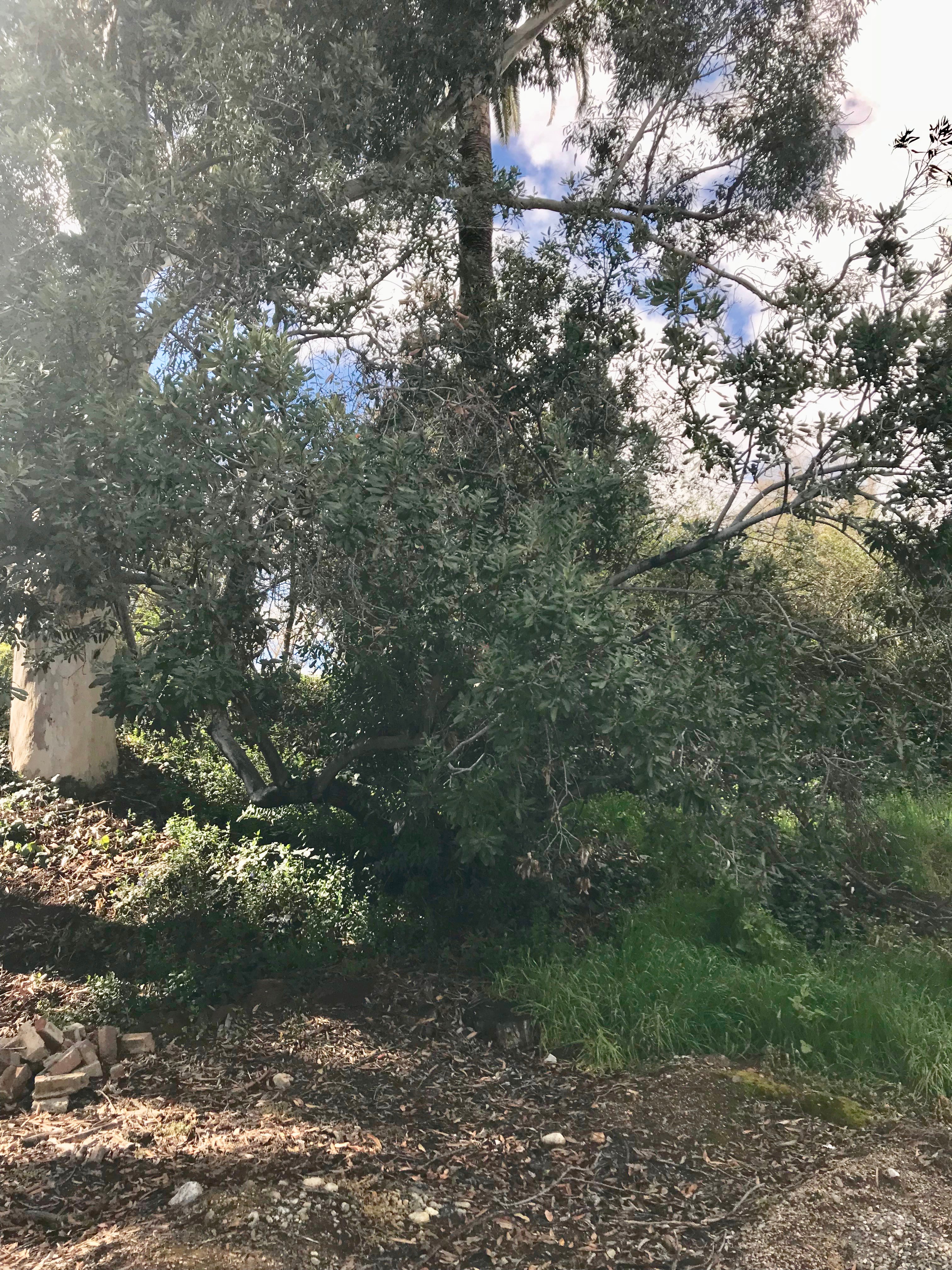 Figure 1: Habit
Figure 1: Habit
Leaves: The leaves (Figure 2) are oblong with jagged edges. They have short leaf stalks and are dark green on the front and lighter on the underside. They range from 5-10 cm in length and are smooth and waxy10.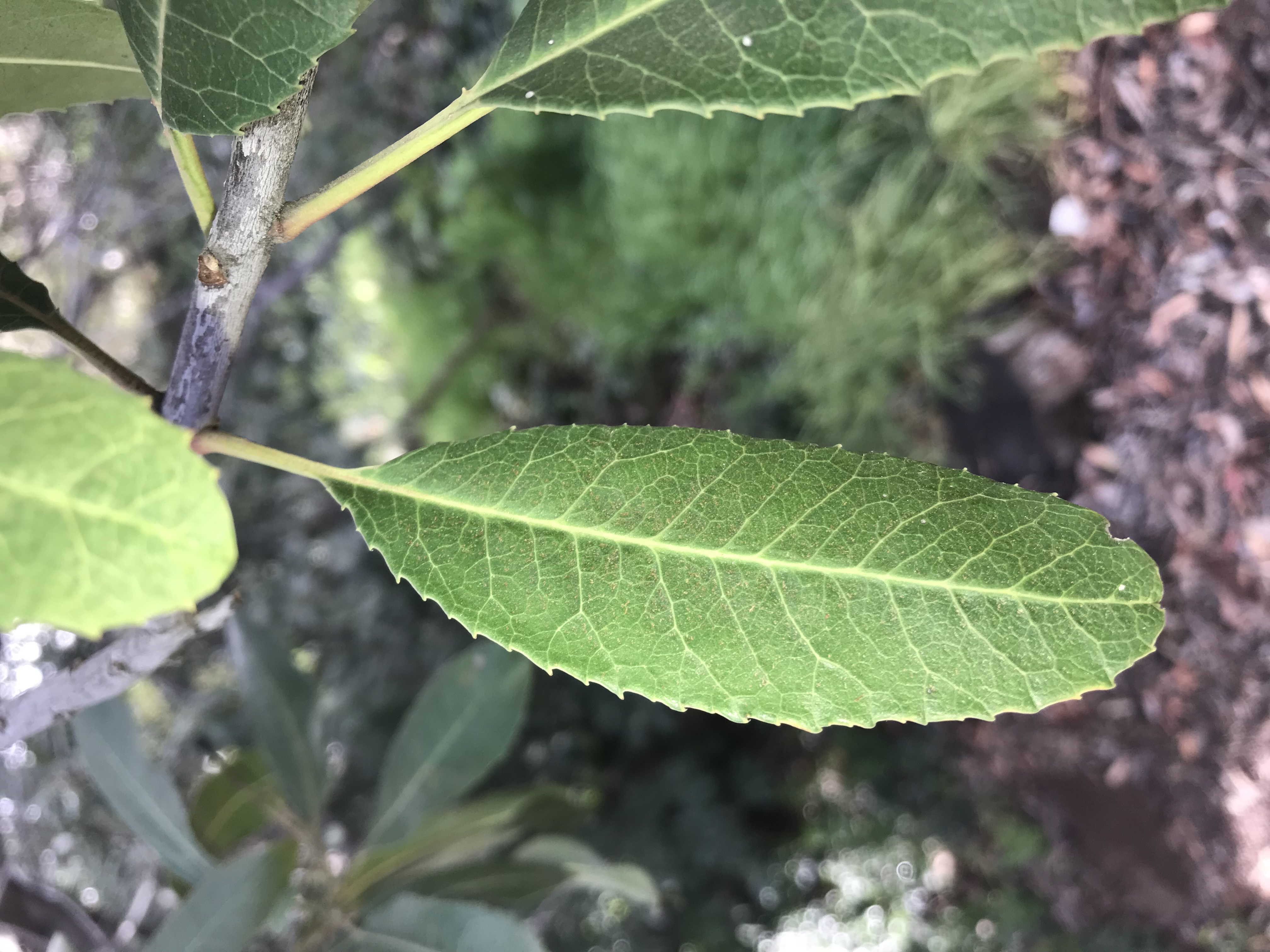
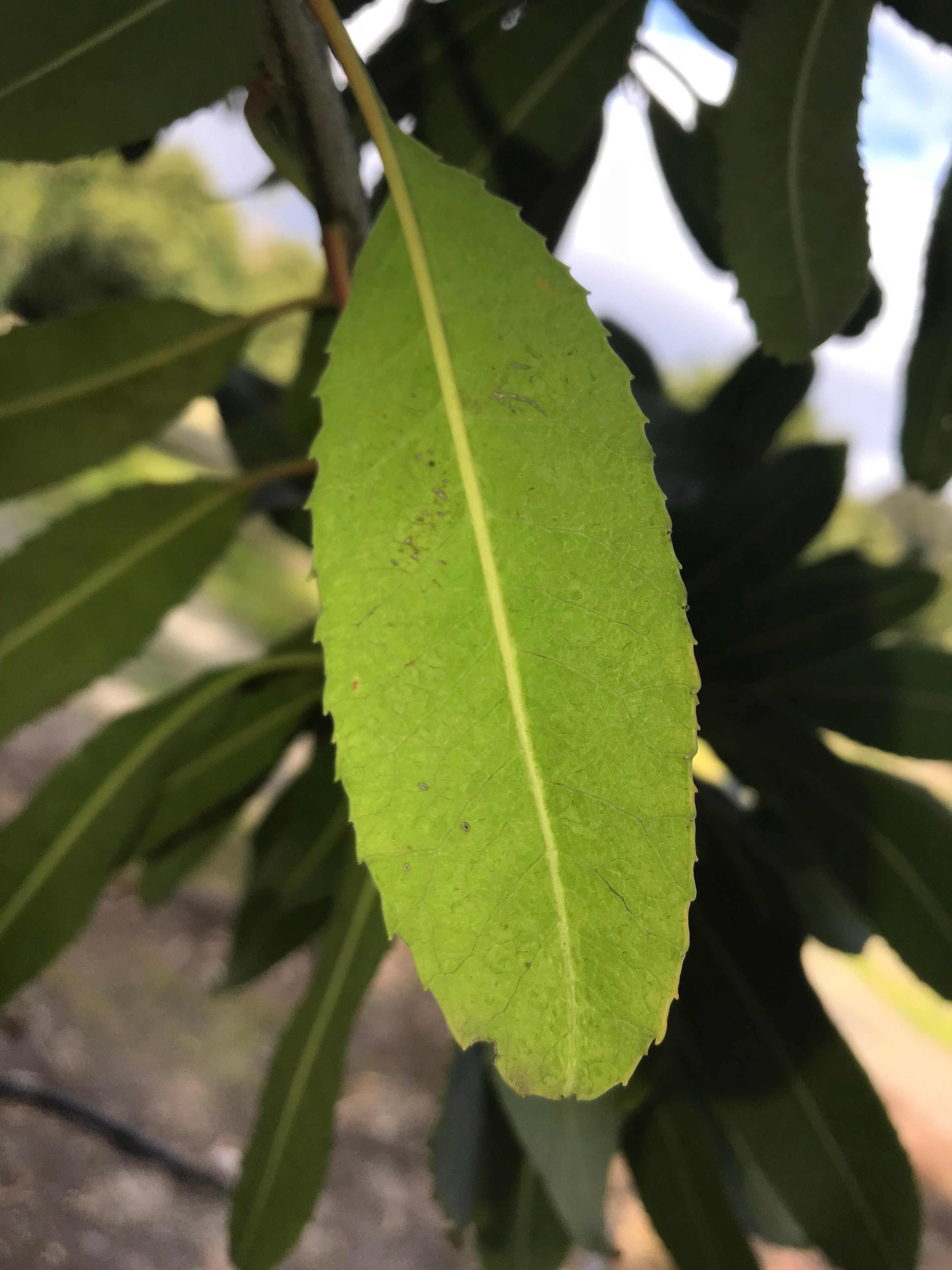 Figure 2: Leaves (front and underside)
Figure 2: Leaves (front and underside)
Twigs & Branches: The twigs (Figure 3) are thin and either reddish-green or gray. They can be hairy in some areas while being smooth in others. The branches (Figure 3) are smooth, densely branched and gray in color.
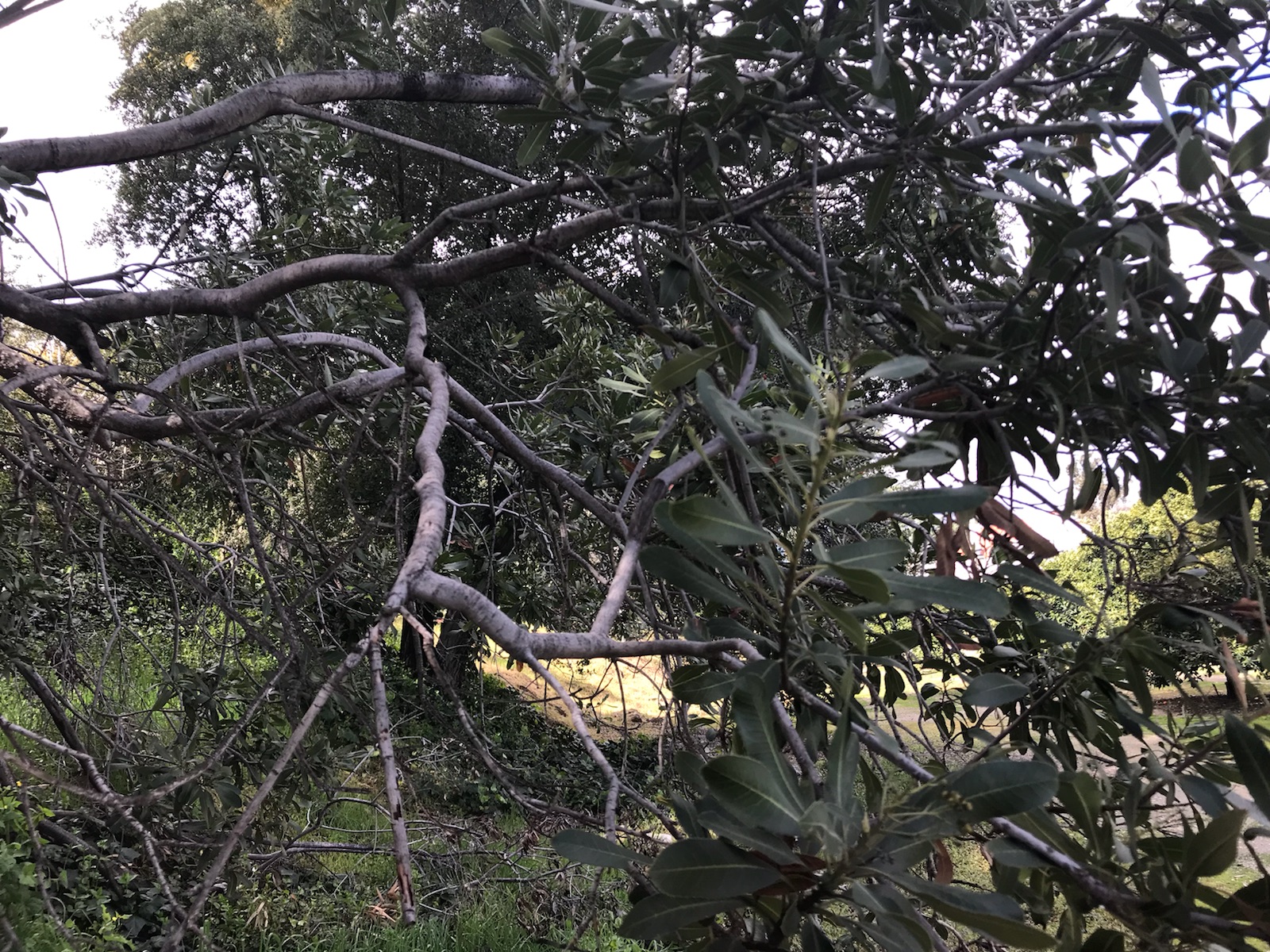 Figure 3: Twigs & branches.
Figure 3: Twigs & branches.
Bark: The bark (Figure 4) is relatively smooth in texture and gray with hints of lighter or darker shades. If the bark is damaged or rough, that is a sign that the Toyon is older.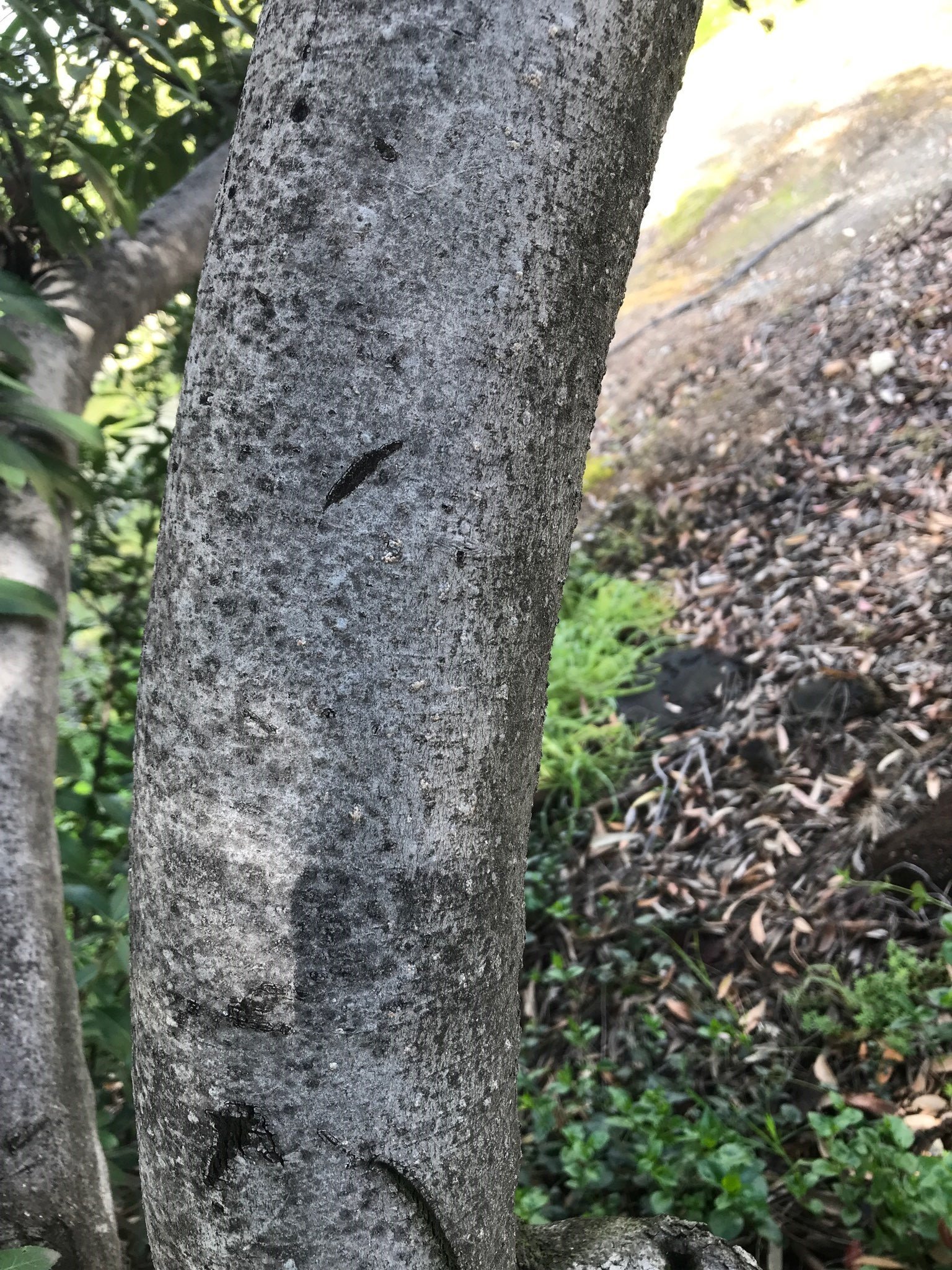 Figure 4: Bark
Figure 4: Bark
Flowers & Fruits: The flowers on Toyon (Figure 5) have five white petals and 10 stamens12. The flowers are roughly 6 mm in diameter and bloom in the summer10. Toyon produces vibrant red berries (Figure 6) that are roughly 5 mm in diameter6. The berries typically fruit in the fall and are toxic to humans10.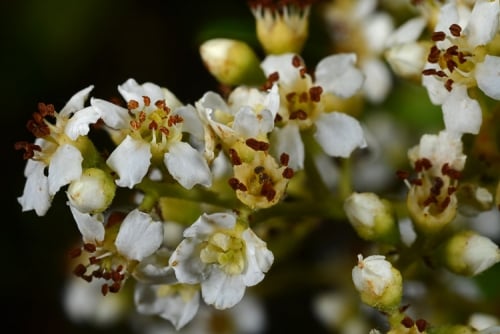 Figure 5: Flowers9
Figure 5: Flowers9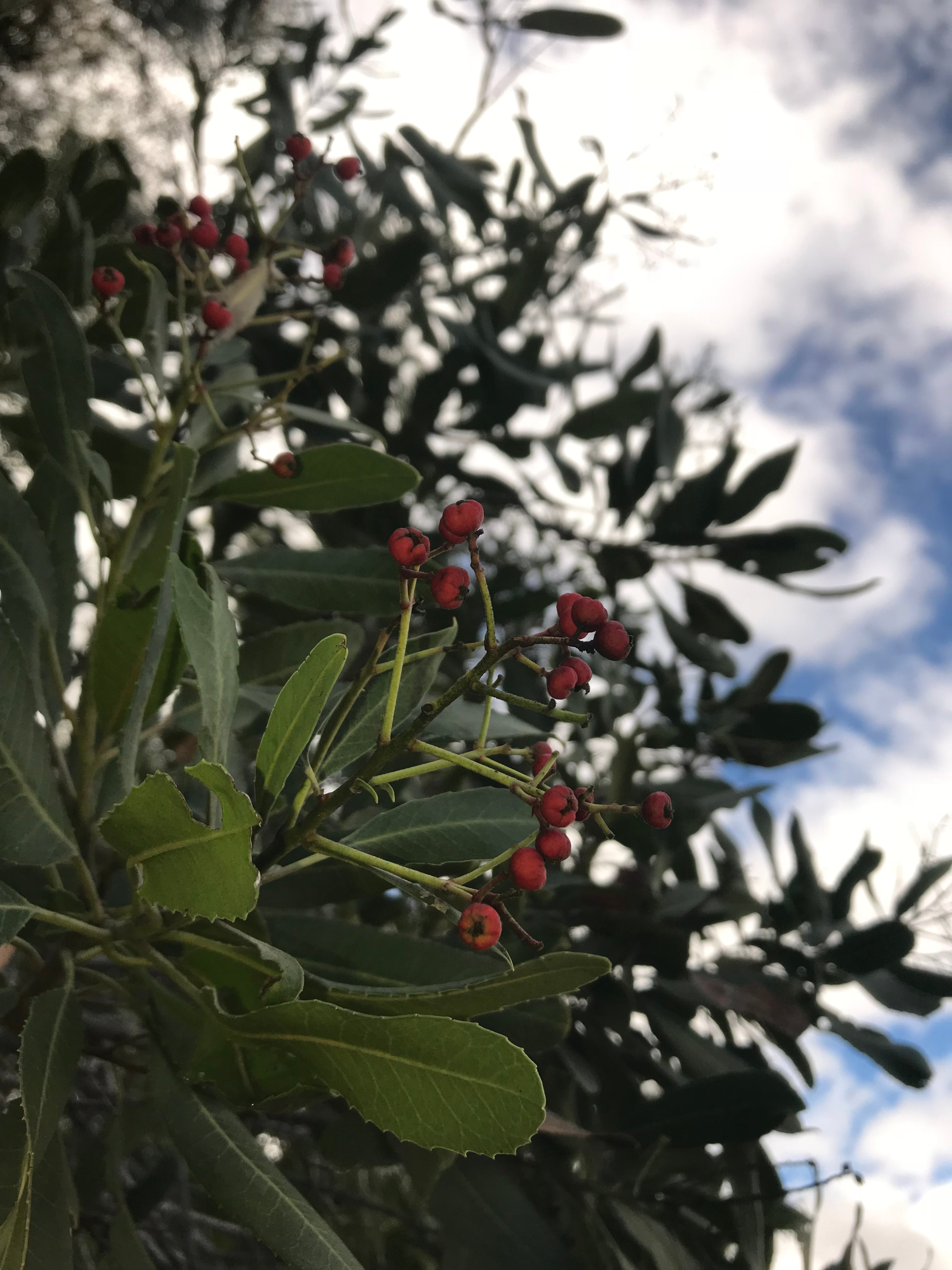 Figure 6: Berries
Figure 6: Berries
Where it’s from
Native Range: The toyon’s native habitat range (Figure 7) consists of western California and the Sierra foothills11. This shrub commonly grows in the sun or where some shade is present, especially when conditions are drier12. In scattered distributions, toyon can be found throughout chaparral communities alongside creeks, the bottoms of mountain slopes, and canyons11. This shrub can grow in a variety of soils with pH levels ranging from 5 to 8 and requires minimal amounts of water to grow and survive6. When toyon is exposed to moister conditions, it becomes more susceptible to bacterial infections9. The berries found on toyon are consumed by several bird and mammal species which aid in the dispersal of its seeds. Humans have also used the berries as a food source in the past, as well as its leaves for herbal infusions1. In more recent time, humans have been using the branches of toyon for Christmas decorations1; leaving a negative impact on toyon shrubs.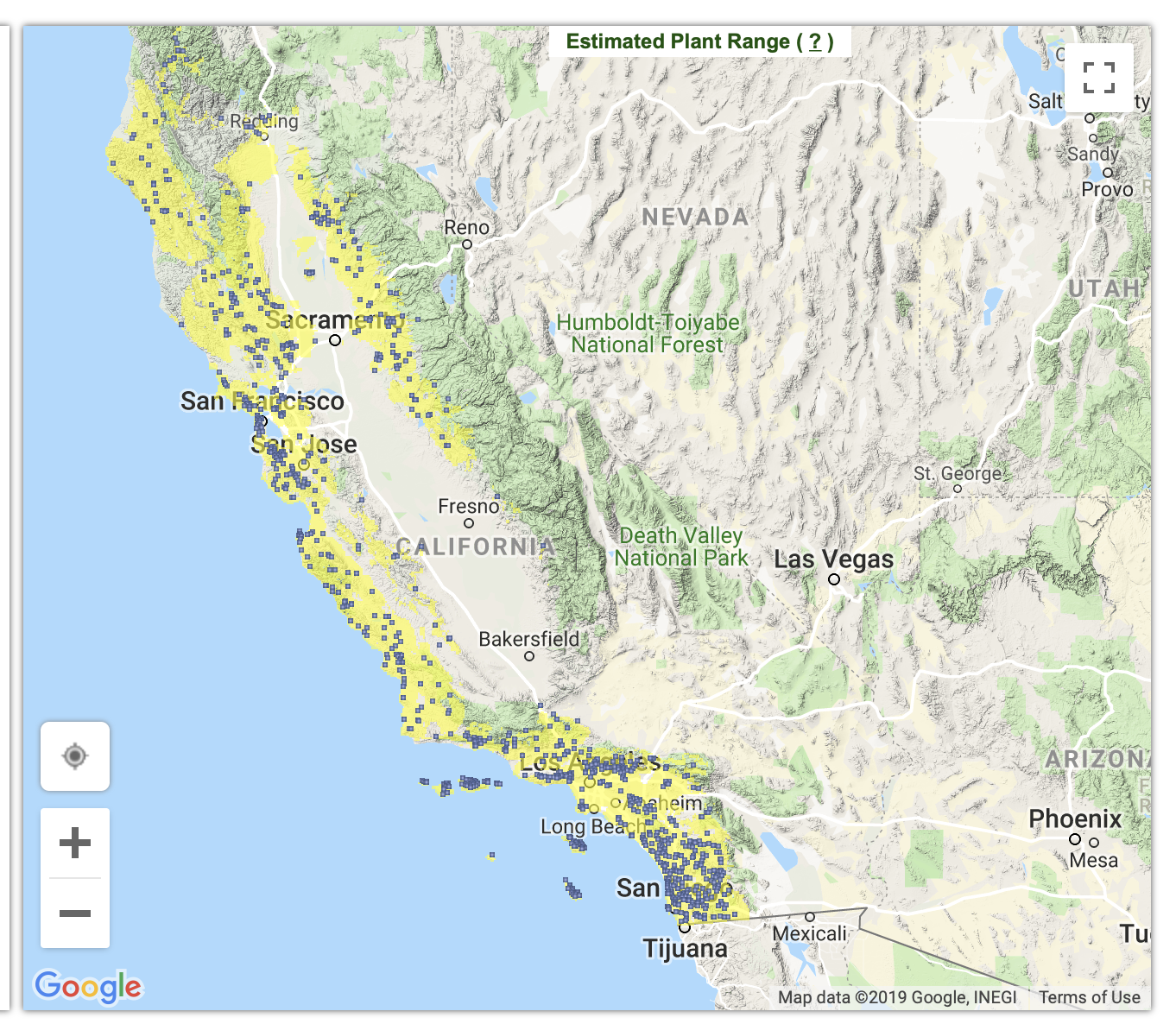 Figure 7: Toyon's native range10
Figure 7: Toyon's native range10
Ecological Notes: The berries on toyon serve as a resource to various bird species such as the American robin, cedar waxwing, mockingbird, and hermit thrush2. Mammals like coyotes and bears can also be found feeding off of the berries1. The berries produced by this shrub exhibit a vibrant red color which helps to attract fruit-eating animals. These animals will digest the nutritious coating of the berries and excrete the seed away from the parent plant reducing the overall competition2. Toyon also attracts some pollinators such as native bees, pollinator flies, and butterflies with their white flowers during the early summer2.
Two major pests of toyon are scales and thrips. These pests are insects that will drink the sap of this shrub causing it to slowly weaken and possibly even die. Three common methods of controlling these pests are releasing predators, like lacewings or mites, spraying the plant with water, and using natural or chemical spraying solutions7. Aside from these two pests, toyon is also susceptible to a bacterial disease known as fire blight which causes an overall scorched appearance of its leaves. The bacterium responsible for this disease is Erwinia amylovora9. A common sign of fire blight is when the trunk or branches of the tree begin to ooze out a tan and watery material. Fire blight will typically occur in the spring due to warmer and moister weather. This disease can be controlled by removing the diseased branches below the infected site and will take place in the summer or winter because the disease is no longer spreading9.
Toyon has adapted to its environment in several different ways. It has adapted to have a strong and heavily-branched root system that is able to obtain the limited amounts of water it is exposed to7. The leaves on toyon are also thick and waxy that reduce water loss helping keep this shrub green throughout the year. The combination of these two adaptations have made toyon drought-tolerant8. This shrub is considered to be inflammable and is able to re-sprout effectively from the crown of the root after a fire has occurred11. Lastly, the berries and leaves have cyanic compounds which help reduce animal consumption9.
What we use it for
Native Americans traditionally used toyon for food. The berries on toyon do not provide much nutritional value, so it was typically made into a jelly1. When settlers discovered the toyon berries, they broke them down and added sugar to make custard and wine. Native Americans would also use the leaves to make infusions that could be used for treating infections or regulating menstruation1.
A common use of toyon amongst humans today is the collection of its branches during Christmas time due to its festive appearance10. The branches are cut off and used as Christmas decorations such as wreaths. This practice became so popular and the threat to the toyon population so great from this that California ultimately ended up passing the CA Penal Code 384a in 1993, stating that no person may collect toyon on public lands in California4.
References
Biographers: Casey Curow & Zachary Douglass, BIOL 238, Evolution, Ecology & Behavior, Spring 2019